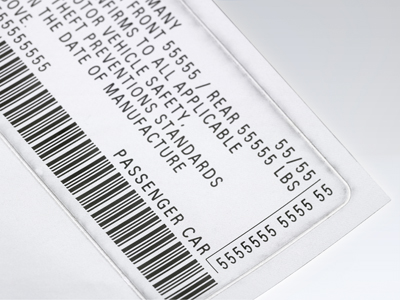- Types of processing: aser marking (engraving, decolorization, annealing)
- Machined materials: metals, plastics, ceramics, foils
- Advantages: ability to apply any shape, high speed and precision, high repeatability
- Industries: all


- engraving
- decolorization
- wyżarzanie
Photo gallery
Laser marking: ablation and engraving
Laser marking: foaming and decolorization
Decolorization and foaming are laser marking methods used primarily in plastics processing.
As a result of heating the surface by the laser beam, there is a local change in its color to a lighter or darker one, i.e. its discoloration. This is determined by the chemical composition of the material and the nature of the transformations occurring in it due to interaction with the laser radiation. For example, when processing a bright component, soot particles are formed, which darken the created inscription.
The foaming process proceeds in a different way: the laser beam partially melts the surface of the component, and inside the resulting liquid gas bubbles are formed, which further increase their volume. The result is something similar to plastic foam. Light incident on the treated surface – due to the presence of gas particles – is reflected, making the altered area appear brighter than the base component.
Laser marking: annealing
Annealing is a relatively new technique for marking components, and research is constantly being conducted to further develop and improve this method. Its main area of application is the automotive industry and semiconductor technology. It is also increasingly used in medical device manufacturing processes.
As a result of the delivery of laser energy to the component, the temperature of the material increases, which in the case of some metals (such as steel) causes a change in its color. This is conditioned by the formation of oxidation layers on the surface of the material, the color of which is closely related to the temperature of heating the element. As a result, the external structure of the surface is not affected, and the resulting marking is clear and legible.
